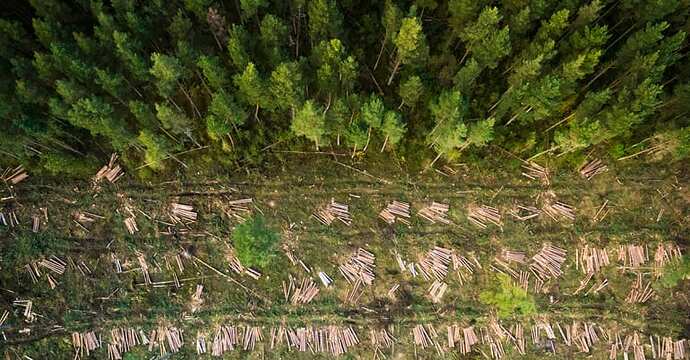From the end of 2025, EU Regulation 2023/1115 is expected to come into effect. Its modest name belies its potentially industry-transforming impact. Described by the World Wildlife Fund as “historic”, “groundbreaking”, and as “changing the rules of the game”,1 the ‘Deforestation Regulation’, as it is better known, will become one of the world’s first ever laws to tackle deforestation at the global level.
Covering numerous forest-risk commodities – including timber, palm oil, soy, coffee and cocoa – the regulation will require any company that produces, uses or trades in the listed commodities or derived products within the EU, to prove that the commodities have not come from recently deforested land. Crucially, while the commodities must have been grown or harvested in line with local laws, evidence of this alone will not be sufficient. To ensure products do not originate from regions with loose, ill-enforced, or even non-existent laws, firms must actively provide proof that relevant products have come via deforestation-free supply chains.2
According to Interpol, as much as 30% of the entire global trade in timber may come from illegal sources. Illicit timber is the world’s most profitable natural resource crime, worth as much as USD 150 billion each year
For the timber industry, the impact could be seismic. According to Interpol, as much as 30% of the entire global trade in timber may come from illegal sources.3 Illicit timber is the world’s most profitable natural resource crime, worth as much as USD 150 billion each year.4 For the myriad sectors and businesses that rely on timber, this poses a problem. In a vast, sprawling and often opaque industry, how can they be sure the wood they are buying comes from legal, sustainable sources? And, when it comes to satisfying the landmark new EU Regulation (and increasingly sustainability conscious consumers), can they prove it?
Under the microscope
US-based non-profit World Forest ID may have a solution. Formed in 2017 by the Royal Botanic Gardens at Kew, London, the United States Forestry Service, UK isotope testing experts Agroisolab, and the Forest Stewardship Council, World Forest ID is pioneering a new testing technique that aims to pinpoint the geographic location from which a piece of wood originated to within 10 kilometres.5
The work starts at Kew Gardens, where a vast physical and digital database is being built up containing anatomical analysis of hundreds of tree species. The recipe is simple – 1) cut a small cube of wood from the sample; 2) boil for 30 seconds to remove air bubbles; 3) plane sample into near microscopic slices; 4) analyse under microscope; 5) record image.
The resulting ‘wood anatomy’ database can be used to identify the species of a sample taken from any product, from an untreated piece of timber to a finished child’s toy
The resulting ‘wood anatomy’ database can be used to identify the species of a sample taken from any product, from an untreated piece of timber to a finished child’s toy. While advances in computing power have sped up the process, this first step is not new. What is new, however, is the second step.
All plant-life is made up of carbon, nitrogen, hydrogen and oxygen – each of these elements takes a different ‘isotopic form’ depending on location-specific factors such as the mineral make-up of the soil in which the plant grew and the meteorological conditions of the region. So, having first identified the species, scientists can now compare each sample against a second, still larger, ‘isotopic database’, taken from thousands of samples of living trees, with each record showing the location at which the sample was taken. Where an isotopic match is found, researchers can state with confidence that the wood under question came from the same region.
And the chance of finding a match is growing. World Forest ID has now built the world’s biggest open-source database of species and isotopic analysis, comprising 35,000 physical reference samples covering 378 plant species, creating chemical fingerprints for the species and geographical location for a growing number of deforestation-risk species, including timber, rubber, soy, coffee, cocoa, and palm oil.
Read also: Meet Monsoon Tea: the firm making traceable, forest-friendly tea
From theory to practice
In March 2024, Belgian authorities used this ground-breaking new technique to identify 260 tonnes of timber imported into Belgium from Russia illegally.6 Suspecting that Russian timber imports were continuing despite sanctions imposed after Russia’s invasion of Ukraine, Dr Victor Deklerck, scientific director of World Forest ID, led researchers in analysing samples against a sub-set reference library that related to the twelve nations thought the most likely candidates for the wood’s true origin, including samples taken from Russia.
Having identified Russia as the region of origin, authorities were then able to trace the supply chain back through Latvia and Estonia, closing down an illegal import route and a lucrative Russian revenue stream.
FULL ARTICLE: Tracking timber: innovations promise wood supply chain transparency | Lombard Odier
